Motorized Hurricane Screen
Why Maxforce

MAXFORCE PROVEN PROTECT
Engineered For Excellence
For nearly two decades, MaxForce has manufactured hurricane screens to meet the most demanding building code, the High Velocity Hurricane Zone of Miami-Dade. The MaxForce track is our newest version of the fixed track we have used with great success for high wind applications all over the globe.
The benefits of a fixed track are unmatched strength - this is important when designing a screen system for hurricanes. When you want the strongest system available, and a proven veteran of many hurricanes, the MaxForce Hurricane Track is your best choice.
MAXFORCE THE #1 MOTORIZED HURRICANE SCREEN
Contact A+ Certified MaxForce Screen Dealer Today...
MAXFORCE HURRICANE SCREENS
Engineering Features

No blowouts. No rewraps. No frustration.
MaxForce is the only retractable screen system on the market designed to stay locked in the track—even in high winds. Smart motor senses resistance and adjusts seamlessly, allowing self-correction when the screen encounters an obstacle: Fewer snags, fewer jams, and fewer costly service calls.
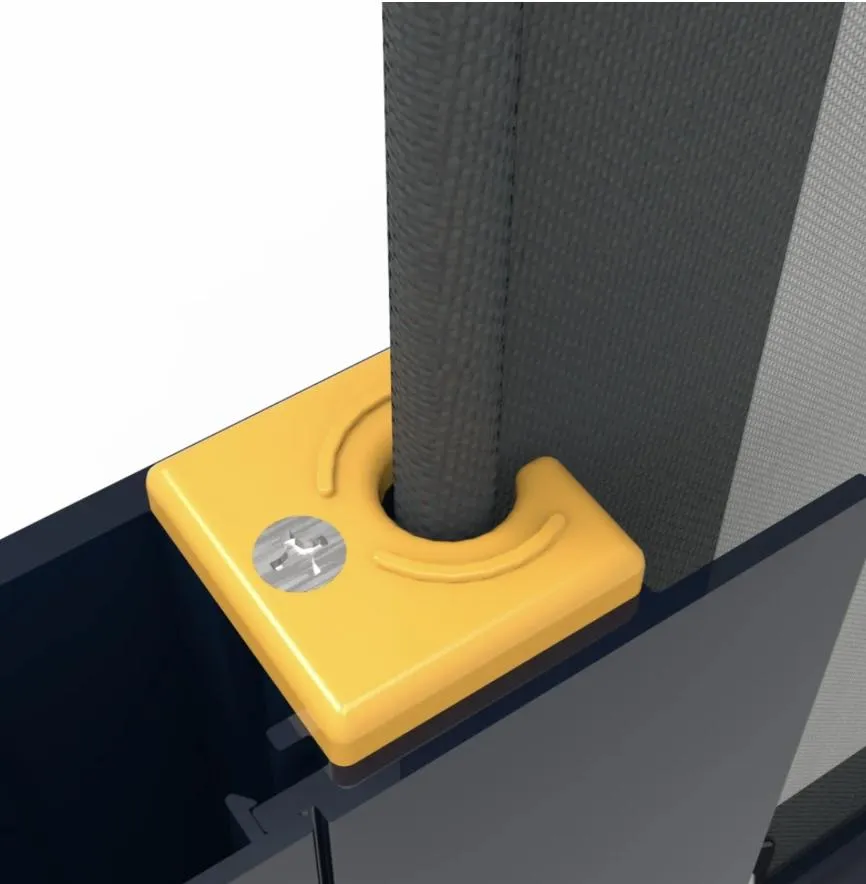
No Zipper. No Cable. Just Simple Deployment
MaxForce pioneered Keder-edge technology in motorized screens, delivering unmatched durability and simplicity. Borrowed from sailboat rigging, this system eliminates zippers, cables, and exposed hardware—ensuring smooth, reliable operation every time.
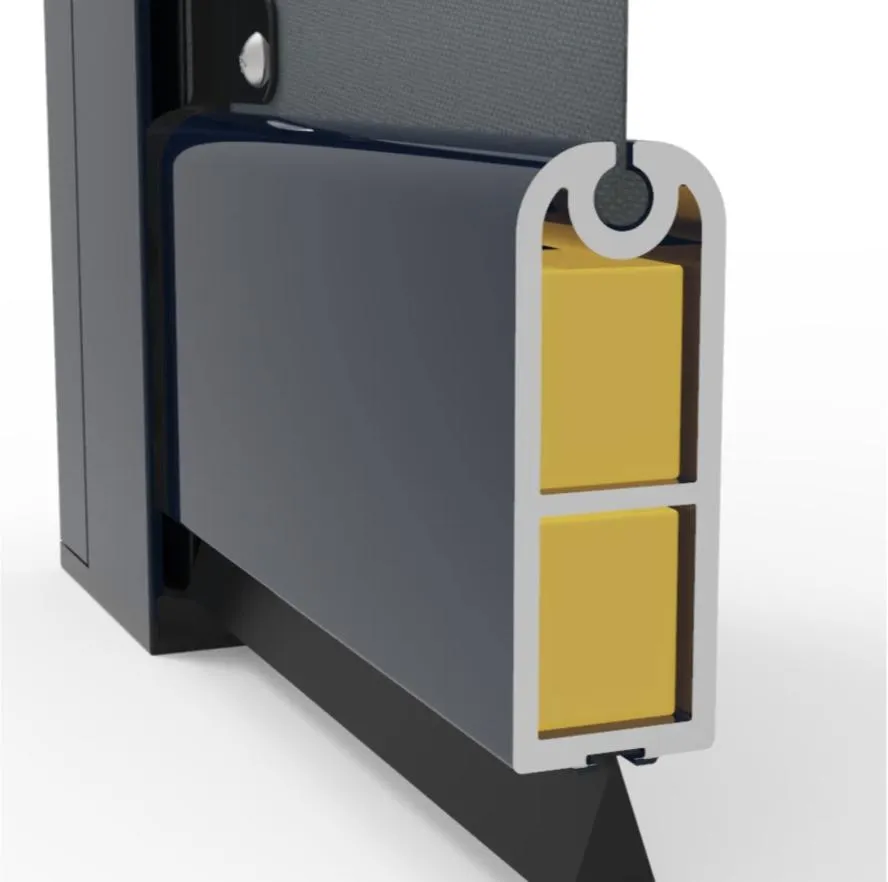
Heavy Duty
The MaxForce weight bar is engineered for strength—and built to hold its ground. Pound for pound, it’s the heaviest and most robust weight bar in the industry. This ensures proper screen tension, flawless deployment, and maximum stability in high wind zones. —limited flex, no failure.
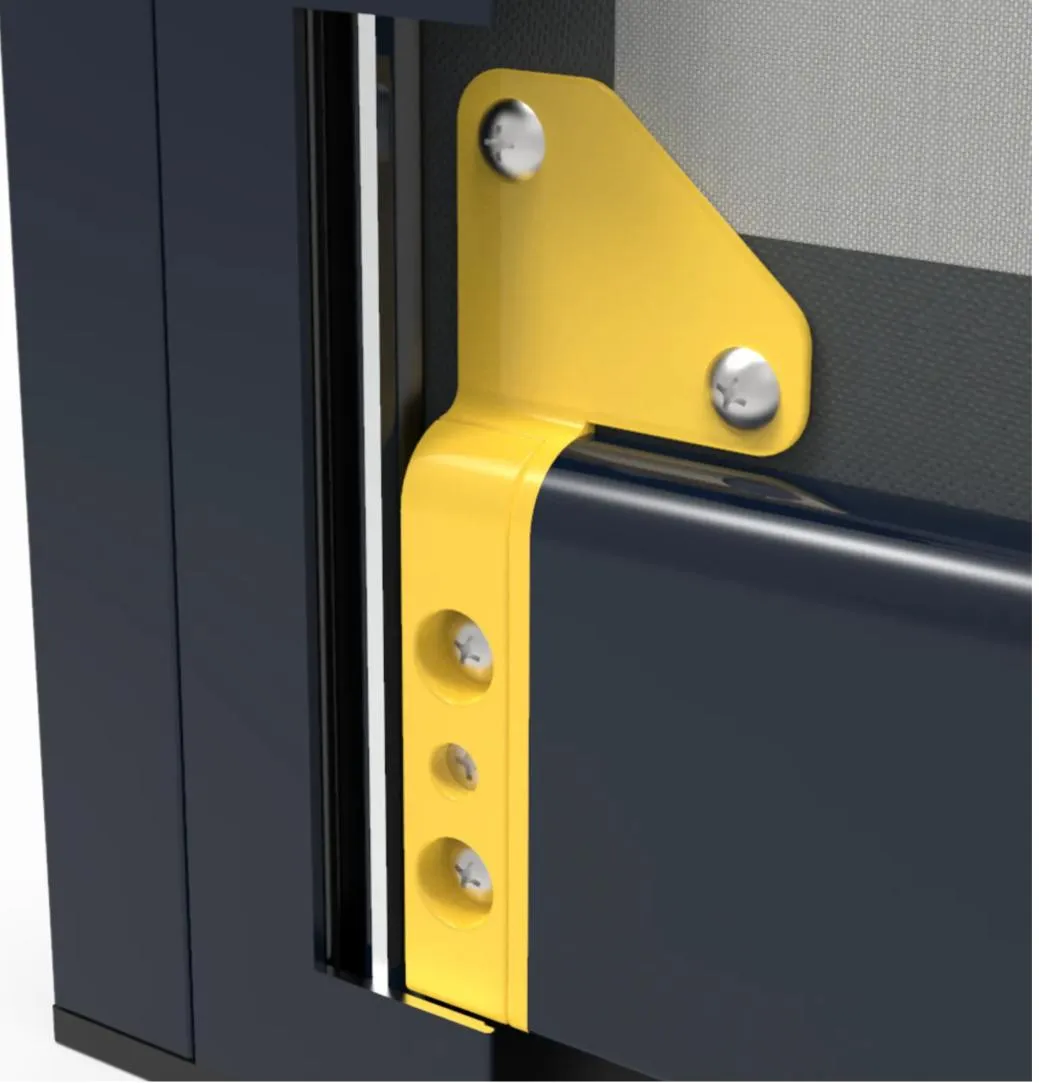
Reinforced Corners
MaxForce’s heavy-duty weight bar isn’t just strong. It’s smart. Reinforced corners and integrated tie-ins create a unified structure that acts like a solid wall of protection when deployed. Made from high-strength nylon, this bar absorbs impacts while maintaining structural integrity.
Motorized Hurricane Screen
Why Maxforce

MAXFORCE PROVEN PROTECT
Engineered For Excellence

For nearly two decades, MaxForce has manufactured hurricane screens to meet the most demanding building code, the High Velocity Hurricane Zone of Miami-Dade. The MaxForce track is our newest version of the fixed track we have used with great success for high wind applications all over the globe.
The benefits of a fixed track are unmatched strength - this is important when designing a screen system for hurricanes. When you want the strongest system available, and a proven veteran of many hurricanes, the MaxForce Hurricane Track is your best choice.
MAXFORCE THE #1 MOTORIZED
HURRICANE SCREEN
Contact A+ Certified MaxForce Screen
Dealer Today...
MAXFORCE HURRICANE SCREENS
Engineering Features

No blowouts. No rewraps.
No frustration.
MaxForce is the only retractable screen system on the market designed to stay locked in the track—even in high winds. Smart motor senses resistance and adjusts seamlessly, allowing self-correction when the screen encounters an obstacle: Fewer snags, fewer jams, and fewer costly service calls.

No Zipper. No Cable.
Just Simple Deployment
MaxForce pioneered Keder-edge technology in motorized screens, delivering unmatched durability and simplicity. Borrowed from sailboat rigging, this system eliminates zippers, cables, and exposed hardware—ensuring smooth, reliable operation every time.

Heavy Duty
The MaxForce weight bar is engineered for strength—and built to hold its ground. Pound for pound, it’s the heaviest and most robust weight bar in the industry. This ensures proper screen tension, flawless deployment, and maximum stability in high wind zones. —limited flex, no failure.

Reinforced Corners
MaxForce’s heavy-duty weight bar isn’t just strong. It’s smart. Reinforced corners and integrated tie-ins create a unified structure that acts like a solid wall of protection when deployed. Made from high-strength nylon, this bar absorbs impacts while maintaining structural integrity.

HEADACHE-FREE
Exclusive self-tensioning system eliminates 99.9% of screen issues. No track adjustments, broken zippers, or dislodged screens.

LIFETIME WARRANTY
Exterior shade screens reduce cooling bills and MaxForce hurricane screens reduce insurance premiums in hurricane zones.

HURRICANE STRONG
Our MaxForce tracks and advanced hybrid ballistic fabrics withstand 150+ mph winds. Approved by Florida Building Commission for hurricane zones. Lab and real-world tested.

BUILT TO LAST
We use marine-grade materials such as powder-coated aluminum, UV-protected nylons, stainless steel fasteners, and premium fabrics. Resists corrosion, rust, and screen failure.

COST-SAVING
Exterior shade screens reduce cooling bills and MaxForce hurricane screens reduce insurance premiums in hurricane zones.
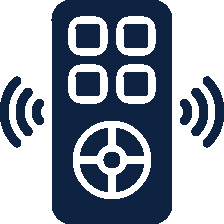
SMART CONTROLS
Control MaxForce screens via remote and
phone or integrate with popular home automation systems for advanced
capabilities.

SECURE TRACK
MaxForce Fix Hurricane Track holds firm under extreme loads

MAX CORROSION PROTECTION
Powder Coated Aluminum Protects your investment from exposer and corrosion.

HEAVY-DUTY DESIGN
Our screens are designed to withstand the extreme. High wind, Rain, or Shine, Dust Dirt, Dander, it doesn't matter. MaxForce Cover it all.

CUSTOM-MADE SCREENS
Tailor-made screens with vast color, fabric, and system options. Custom paint color and fabric matching are available.
MAXFORCE THE #1 MOTORIZED HURRICANE SCREEN
Contact A+ Certified MaxForce Screen Dealer Today...

HEADACHE-FREE
Exclusive self-tensioning system eliminates 99.9% of screen issues.
No track adjustments, broken zippers,
or dislodged screens.

LIFETIME WARRANTY
Exterior shade screens reduce cooling
bills and MaxForce hurricane screens
reduce insurance premiums in
hurricane zones.

HURRICANE STRONG
Our MaxForce tracks and advanced hybrid ballistic fabrics withstand
150+ mph winds. Approved by Florida Building Commission for hurricane
zones. Lab and real-world tested.

BUILT TO LAST
We use marine-grade materials such
as powder-coated aluminum, UV-protected nylons, stainless steel
fasteners, and premium fabrics. Resists corrosion, rust, and screen failure.

COST-SAVING
Exterior shade screens reduce cooling
bills and MaxForce hurricane screens
reduce insurance premiums in
hurricane zones.

SMART CONTROLS
Control MaxForce screens via remote and
phone or integrate with popular home automation systems for advanced
capabilities.

SECURE TRACK
MaxForce Fix Hurricane Track holds firm under extreme loads

MAX CORROSION PROTECTION
Powder Coated Aluminum Protects your investment from exposer and corrosion.

HEAVY-DUTY DESIGN
Our screens are designed to withstand
the extreme. High wind, Rain, or Shine,
Dust Dirt, Dander, it doesn't matter. MaxForce Cover it all.

CUSTOM-MADE SCREENS
Tailor-made screens with vast color, fabric, and system options. Custom
paint color and fabric matching are available.
MAXFORCE THE #1 MOTORIZED
HURRICANE SCREEN
Contact A+ Certified MaxForce Screen
Dealer Today...
MAXFORCE
Ready For Life's Storms

MAXFORCE HURRICANE SCREEN SYSTEM
A Certified, Tested System...
The MaxForce Hurricane Screen System meets or exceeds Miami-Dade and Florida Building Code requirements—the toughest hurricane codes on earth—for roll-down hurricane screens. Rated for the 185 MPH wind zone, and with real-world and certified testing. With spans of up to 25 feet, they exceed performance criteria for all local and International Building Codes.
MAXFORCE THE #1 MOTORIZED HURRICANE SCREEN
Contact A+ Certified MaxForce Screen Dealer Today...
MAXFORCE
Ready For Life's Storms

MAXFORCE HURRICANE SCREEN SYSTEM
A Certified, Tested System...
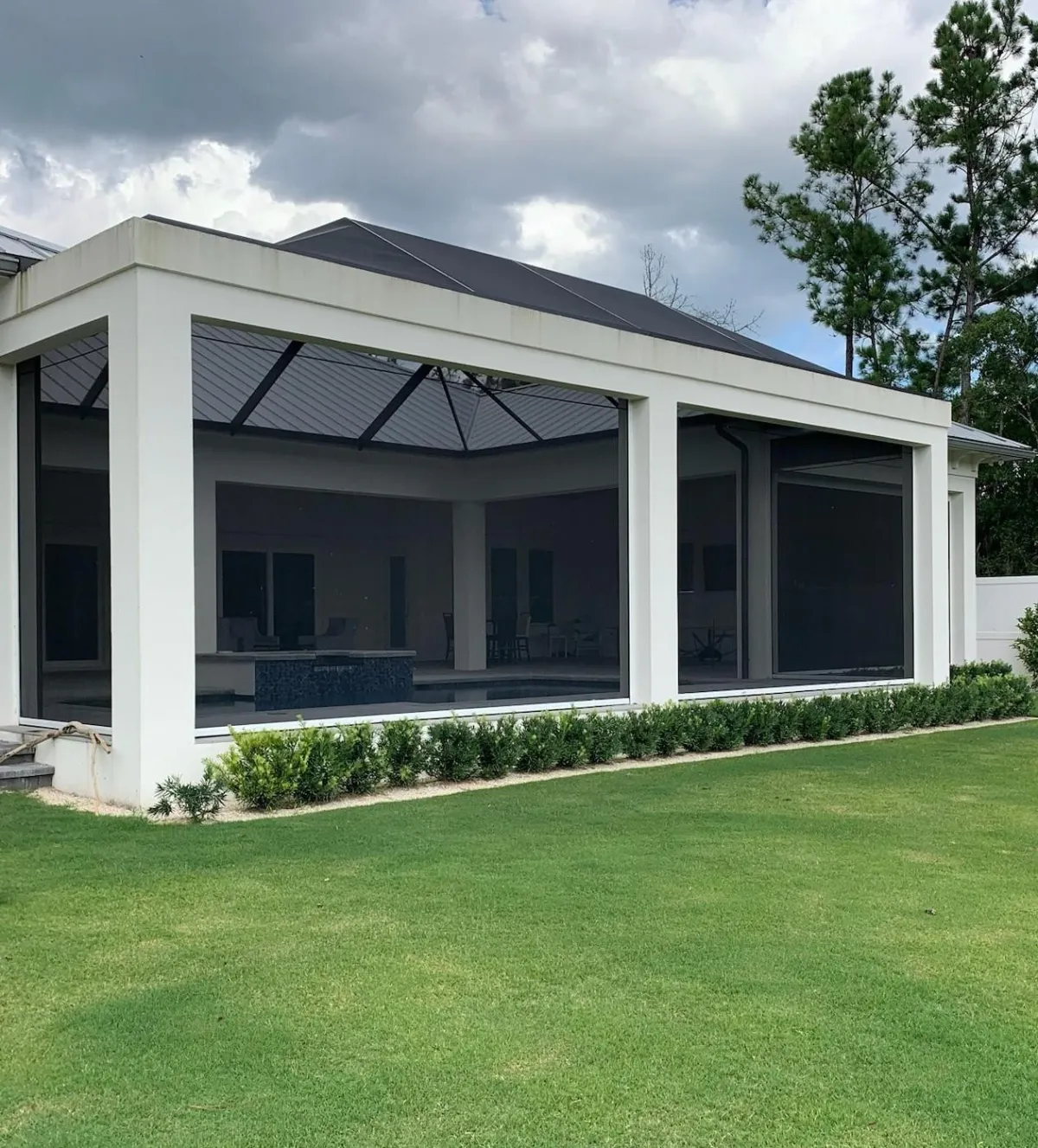
The MaxForce Hurricane Screen System meets or exceeds Miami-Dade and Florida Building Code requirements—the toughest hurricane codes on earth—for roll-down hurricane screens. Rated for the 185 MPH wind zone, and with real-world and certified testing. With spans of up to 25 feet, they exceed performance criteria for all local and International Building Codes.
MAXFORCE THE #1 MOTORIZED
HURRICANE SCREEN
Contact A+ Certified MaxForce Screen
Dealer Today...
THE MAXFORCE DIFFERENCE
Maxforce Hurricane Screen
THE MAXFORCE DIFFERENCE
MaxForce Hurricane Screen
MaxForce Hurricane Screens, powered by our MaxForce system, meet the toughest standards—including HVHZ certification in Miami-Dade and Broward. They last longer, resist more, and do more than any screen on the market—proven protection without compromise.
MaxForce Hurricane Screens —Delivers 365 days of perfect protection, rain or shine, on your patio and lanai. With the push of a button or a tap on the mobile app, your patio is storm-ready— furniture and openings fully protected in seconds.
MaxForce Hurricane Screens fabric blocks up to 95% of the sun’s damaging UV-rays while shielding against wind, rain, insects, dust, and debris. It also helps reduce heat and lower energy costs by limiting solar exposure—comfort and protection in one smart solution.
Like all Fenetex products, our MaxForce Hurricane Screens are highly customizable and built to order—made to fit your exact openings. No guesswork, no compromises—just precision-fit protection tailored to your space.
Pair our retractable MaxForce Hurricane Screens with other Fenetex screens for customized and independent solutions. Each screen operates independently, giving you the protection you want when you need it.
MaxForce Hurricane Screens offer built-in privacy without blocking your view. Like a two-way mirror, you can see out—but neighbors and passersby can not see in. It provides the perfect blend of openness and seclusion, day or night.
MAXFORCE THE #1 MOTORIZED HURRICANE SCREEN
Contact A+ Certified MaxForce Screen Dealer Today...
INTEGRITY MATTERS
How MaxForce Is Made Matters
MaxForce Hurricane Screens, powered by our MaxForce system, meet the toughest standards—including HVHZ certification in Miami-Dade and Broward. They last longer, resist more, and do more than any screen on the market—proven protection without compromise.
.
MaxForce Hurricane Screens —Delivers 365 days of perfect protection, rain or shine, on your patio and lanai. With the push of a button or a tap on the mobile app, your patio is storm-ready— furniture and openings fully protected in seconds.
MaxForce Hurricane Screens fabric blocks up to 95% of the sun’s damaging UV-rays while shielding against wind, rain, insects, dust, and debris. It also helps reduce heat and lower energy costs by limiting solar exposure—comfort and protection in one smart solution.
.
Like all Fenetex products, our MaxForce Hurricane Screens are highly customizable and built to order—made to fit your exact openings. No guesswork, no compromises—just precision-fit protection tailored to your space.
.
Pair our retractable MaxForce Hurricane Screens with other Fenetex screens for customized and independent solutions. Each screen operates independently, giving you the protection you want when you need it.
.
MaxForce Hurricane Screens offer built-in privacy without blocking your view. Like a two-way mirror, you can see out—but neighbors and passersby can not see in. It provides the perfect blend of openness and seclusion, day or night.
.
MAXFORCE THE #1 MOTORIZED
HURRICANE SCREEN
Contact A+ Certified MaxForce Screen
Dealer Today...
INTEGRITY MATTERS
How MaxForce Is
Made Matters
AMERICAN INGENUITY
Made in the USA.
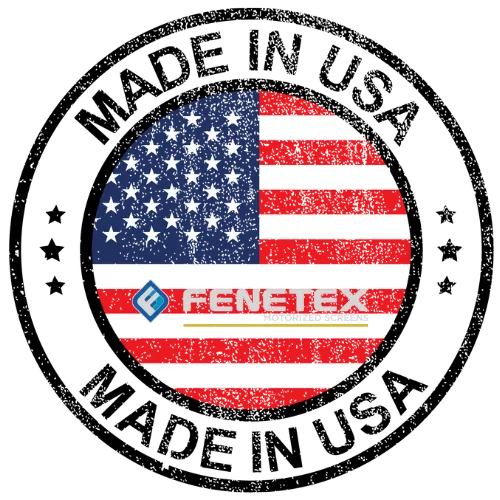
Proudly Made in the USA—every MaxForce screen is built with American strength, precision, and pride. From the smallest components to the final assembly, our materials are sourced and manufactured right here in the United States. No outsourcing. No compromises. Just hardworking Americans protecting American homes with the toughest screen system on the market.

Category 2: When Protection Becomes Critical
There's a line in the sand between hurricanes you can maybe weather and hurricanes that demand respect.
Category 2 is that line.
Wind speeds climb from 96 to 110 mph. Just fourteen miles per hour separates the bottom from the top of this category, but those fourteen miles per hour carry weight. Real weight. The kind that tears roofs apart instead of just damaging them. The kind that doesn't just snap tree branches—it uproots entire trees, root systems and all, and throws them across roads like matchsticks.
This is where the conversation shifts from "prepare your home" to "protect your home—or leave."
The Mathematics of Destruction
NOAA research reveals something critical about wind damage: it doesn't scale in straight lines. A 10 mph increase from 100 to 110 mph more than doubles the potential damage—from ten times that of a minimal Category 1 hurricane to twenty-one times.
Read that again. A storm at the high end of Category 2 can inflict more than double the damage of one at the low end. And both are technically the same category.
This exponential scaling explains why Category 2 storms occupy such dangerous territory. They're strong enough to cause extensive damage but common enough that people underestimate them. They're the storms that catch communities off guard because they're "just" Category 2.
According to the National Hurricane Center, Category 2 hurricanes still fall below the "major hurricane" threshold, which starts at Category 3. But the designation creates a false sense of security. Category 2 storms are extremely dangerous. They're just not catastrophic—yet.
What Extensively Dangerous Actually Means
Walk through a neighborhood after a Category 2 hurricane and the word "extensive" makes sense.
Roofs don't just lose shingles. They lose entire sections. Siding rips away from homes in sheets. Windows fail—sometimes from direct wind pressure, sometimes from debris turning into projectiles at highway speeds. Doors blow in or get torn from their frames.
Well-constructed homes sustain major damage. Poorly constructed ones? They might not be standing at all.
Trees come down by the hundreds. Not the weak ones. Not just the diseased or shallow-rooted. Strong, healthy trees that have weathered dozens of storms get uprooted and toppled. They crush cars. They demolish fences. They land on houses, punching through roofs, sometimes through multiple floors.
Mobile homes—even anchored ones—get destroyed. Manufactured homes suffer severe structural damage. Smaller outbuildings like sheds and detached garages simply cease to exist.
Storm surge reaches six to eight feet above normal tide levels. That's enough to inundate first floors in coastal areas. Enough to make evacuation routes impassable. Enough to turn beach communities into temporary islands.
And the power? Gone. Not for hours. Not for days. Category 2 hurricanes typically cause power outages lasting several days to weeks. Entire regions go dark. Transformers explode. Poles snap. The grid takes weeks to rebuild.
The Stories Written in Wind and Water
September 2020. Hurricane Sally crawled toward the Gulf Coast at less than five miles per hour—walking speed. The slow movement gave it time. Time to organize. Time to strengthen. Time to draw more water vapor from the warm Gulf.
Sally made landfall near Gulf Shores, Alabama as a strong Category 2 hurricane with 105 mph winds. The storm caused $7.3 billion in damage.
The wind was relentless. A 121 mph gust at Fort Morgan. Mobile reported 83 mph sustained winds. Buildings lost roofs. Condos got destroyed. A pier that survived Hurricane Ivan in 2004, recently rebuilt and reopened, partially collapsed again.
But the real devastation came from water.
Sally moved so slowly that rainfall accumulated to historic levels. Twenty inches in the first twenty-four hours in some locations. Over thirty inches in forty-eight hours. Street after street flooded. Rivers exceeded record levels. Communities that had never flooded found water rising in their homes.
Three people died. Hundreds of thousands lost power. The pecan farms of Baldwin County lost over a thousand trees. The Alabama Forestry Commission estimated 2,440 forested acres damaged, 79,175 tons of timber destroyed.
And this was "just" Category 2.
Rewind to September 2004. Hurricane Frances crossed the Atlantic as a Cape Verde storm, strengthening to Category 4 before weakening. It struck Florida's east coast as a Category 2 with winds of 105 mph.
Frances was massive—hurricane-force winds extended 145 miles from the center. The storm caused $9 billion in damage and killed forty-nine people.
It damaged nearly 20,000 single-family homes in Volusia County alone. It ripped 820 aluminum panels off the Vehicle Assembly Building at Kennedy Space Center. It knocked out power to six million people. Some areas went weeks without electricity in Florida's summer heat.
The storm moved slowly, like Sally would sixteen years later, dumping tremendous rainfall. Flash flooding occurred throughout Florida and up into North Carolina. The economic impact extended beyond physical damage—the Labor Day weekend tourism economy collapsed as people canceled reservations and avoided the coast.
Two Category 2 hurricanes. Different years. Different characteristics. Same lesson: Category 2 is where hurricanes transition from manageable to genuinely dangerous.
The Protection Gap
Here's the problem with Category 2 storms: they exist in an uncomfortable middle ground.
They're not "minor" enough to ride out without serious preparation. They're not "major" enough to trigger the same level of urgency as Category 3 and higher storms. This creates complacency.
People board up some windows but not all. They stock supplies but don't evacuate. They secure outdoor furniture but leave their boats in the water. They prepare halfway, assuming Category 2 means halfway dangerous.
It doesn't work that way.
Storm surge doesn't care about the category when it's flooding your first floor. Wind doesn't check the Saffir-Simpson scale before it tears your roof off. Flooding doesn't ask permission before it destroys everything you own.
Category 2 storms produce conditions that require full protection measures. Proper hurricane screens. Impact-resistant windows. Roof reinforcement. Flood barriers. Emergency supplies for extended outages.
And sometimes—depending on your location, your structure, your elevation—evacuation.
When the Category Lies
The Saffir-Simpson scale measures wind. Only wind. A Category 2 hurricane with slow forward motion can produce more flooding than a fast-moving Category 4. A Category 2 hitting at high tide on a vulnerable coastline can generate surge matching stronger storms elsewhere.
Frances demonstrated this in 2004. Though it weakened to Category 2 before landfall, its enormous size meant hurricane-force winds covered a massive area. More square miles of destruction. More homes in the path. More infrastructure damaged.
Sally proved it again in 2020. Category 2 winds, but historic flooding. Near-record storm surge. Catastrophic rainfall totals. The number told one story. The water told another.
This is why meteorologists emphasize watching the whole storm, not just the category. Wind speed matters. But so does size, forward speed, storm surge forecast, rainfall predictions, and your specific location.
Category 2 means extremely dangerous winds. But it might also mean devastating flooding, long-term power loss, and weeks of recovery.
The Protection Reality
Category 2 is where hurricane protection stops being optional.
Standard construction won't cut it. Regular windows become failure points. Typical roofing becomes vulnerable. Unprotected doors get breached.
Motorized retractable hurricane screens become essential at this threshold. They provide the wind resistance needed to keep debris from shattering windows. They reduce the pressure differential that can lift roofs. They protect the envelope of your home from the assault of 100+ mph winds.
But even the best protection won't help if you're in a flood zone and don't evacuate. Won't save you if you're in a mobile home that gets destroyed. Won't matter if storm surge inundates your area.
Protection means knowing when screens and shutters are enough—and when they're not. When securing your home is the right call—and when leaving is the only call.
The Bottom Line
Category 2 hurricanes occupy the most deceptive space on the hurricane scale.
They're powerful enough to cause billions in damage. Violent enough to kill dozens of people. Destructive enough to leave communities without power for weeks. Yet they don't carry the "major hurricane" designation that triggers automatic respect.
The winds are extremely dangerous—96 to 110 mph sustained, with gusts much higher. The damage is extensive—roofs destroyed, trees downed, power infrastructure demolished. The recovery is measured in weeks or months, not days.
These storms demand serious preparation. Real protection. Honest assessment of your vulnerability. And when officials issue evacuation orders, they demand you listen.
Because Category 2 isn't the middle of the scale. It's the threshold where hurricanes stop being weather events you monitor and become threats you must actively defend against.
Don't let the number fool you. Don't let the "non-major" designation lull you into partial preparation. Category 2 is where protection becomes critical—not optional.
When one of these storms is bearing down on your community, you want to be the house with protection in place, supplies stocked, and a plan executed. Not the one learning too late that Category 2 is more than enough to change everything.
Next in the series: Category 3: Major Hurricane Territory
Previous post: Category 1: The Deceptive Beginning
Additional Resources:
National Hurricane Center - Category Definitions - Official Saffir-Simpson scale
NOAA Hurricane Damage Potential - Exponential wind damage mathematics
National Weather Service Hurricane Safety - Comprehensive preparedness guidelines
Company
MaxForce Hurricane Screens
Design Ideals
Resources

© 2025 Maxforce - Powered by Fenetex and Friends of Oatis
AMERICAN INGENUITY
Made in the USA
Proudly Made in the USA—every MaxForce screen is built with American strength, precision, and pride. From the smallest components to the final assembly, our materials are sourced and manufactured right here in the United States. No outsourcing. No compromises. Just hardworking Americans protecting American homes with the toughest screen system on the market.

Category 2: When Protection Becomes Critical
There's a line in the sand between hurricanes you can maybe weather and hurricanes that demand respect.
Category 2 is that line.
Wind speeds climb from 96 to 110 mph. Just fourteen miles per hour separates the bottom from the top of this category, but those fourteen miles per hour carry weight. Real weight. The kind that tears roofs apart instead of just damaging them. The kind that doesn't just snap tree branches—it uproots entire trees, root systems and all, and throws them across roads like matchsticks.
This is where the conversation shifts from "prepare your home" to "protect your home—or leave."
The Mathematics of Destruction
NOAA research reveals something critical about wind damage: it doesn't scale in straight lines. A 10 mph increase from 100 to 110 mph more than doubles the potential damage—from ten times that of a minimal Category 1 hurricane to twenty-one times.
Read that again. A storm at the high end of Category 2 can inflict more than double the damage of one at the low end. And both are technically the same category.
This exponential scaling explains why Category 2 storms occupy such dangerous territory. They're strong enough to cause extensive damage but common enough that people underestimate them. They're the storms that catch communities off guard because they're "just" Category 2.
According to the National Hurricane Center, Category 2 hurricanes still fall below the "major hurricane" threshold, which starts at Category 3. But the designation creates a false sense of security. Category 2 storms are extremely dangerous. They're just not catastrophic—yet.
What Extensively Dangerous Actually Means
Walk through a neighborhood after a Category 2 hurricane and the word "extensive" makes sense.
Roofs don't just lose shingles. They lose entire sections. Siding rips away from homes in sheets. Windows fail—sometimes from direct wind pressure, sometimes from debris turning into projectiles at highway speeds. Doors blow in or get torn from their frames.
Well-constructed homes sustain major damage. Poorly constructed ones? They might not be standing at all.
Trees come down by the hundreds. Not the weak ones. Not just the diseased or shallow-rooted. Strong, healthy trees that have weathered dozens of storms get uprooted and toppled. They crush cars. They demolish fences. They land on houses, punching through roofs, sometimes through multiple floors.
Mobile homes—even anchored ones—get destroyed. Manufactured homes suffer severe structural damage. Smaller outbuildings like sheds and detached garages simply cease to exist.
Storm surge reaches six to eight feet above normal tide levels. That's enough to inundate first floors in coastal areas. Enough to make evacuation routes impassable. Enough to turn beach communities into temporary islands.
And the power? Gone. Not for hours. Not for days. Category 2 hurricanes typically cause power outages lasting several days to weeks. Entire regions go dark. Transformers explode. Poles snap. The grid takes weeks to rebuild.
The Stories Written in Wind and Water
September 2020. Hurricane Sally crawled toward the Gulf Coast at less than five miles per hour—walking speed. The slow movement gave it time. Time to organize. Time to strengthen. Time to draw more water vapor from the warm Gulf.
Sally made landfall near Gulf Shores, Alabama as a strong Category 2 hurricane with 105 mph winds. The storm caused $7.3 billion in damage.
The wind was relentless. A 121 mph gust at Fort Morgan. Mobile reported 83 mph sustained winds. Buildings lost roofs. Condos got destroyed. A pier that survived Hurricane Ivan in 2004, recently rebuilt and reopened, partially collapsed again.
But the real devastation came from water.
Sally moved so slowly that rainfall accumulated to historic levels. Twenty inches in the first twenty-four hours in some locations. Over thirty inches in forty-eight hours. Street after street flooded. Rivers exceeded record levels. Communities that had never flooded found water rising in their homes.
Three people died. Hundreds of thousands lost power. The pecan farms of Baldwin County lost over a thousand trees. The Alabama Forestry Commission estimated 2,440 forested acres damaged, 79,175 tons of timber destroyed.
And this was "just" Category 2.
Rewind to September 2004. Hurricane Frances crossed the Atlantic as a Cape Verde storm, strengthening to Category 4 before weakening. It struck Florida's east coast as a Category 2 with winds of 105 mph.
Frances was massive—hurricane-force winds extended 145 miles from the center. The storm caused $9 billion in damage and killed forty-nine people.
It damaged nearly 20,000 single-family homes in Volusia County alone. It ripped 820 aluminum panels off the Vehicle Assembly Building at Kennedy Space Center. It knocked out power to six million people. Some areas went weeks without electricity in Florida's summer heat.
The storm moved slowly, like Sally would sixteen years later, dumping tremendous rainfall. Flash flooding occurred throughout Florida and up into North Carolina. The economic impact extended beyond physical damage—the Labor Day weekend tourism economy collapsed as people canceled reservations and avoided the coast.
Two Category 2 hurricanes. Different years. Different characteristics. Same lesson: Category 2 is where hurricanes transition from manageable to genuinely dangerous.
The Protection Gap
Here's the problem with Category 2 storms: they exist in an uncomfortable middle ground.
They're not "minor" enough to ride out without serious preparation. They're not "major" enough to trigger the same level of urgency as Category 3 and higher storms. This creates complacency.
People board up some windows but not all. They stock supplies but don't evacuate. They secure outdoor furniture but leave their boats in the water. They prepare halfway, assuming Category 2 means halfway dangerous.
It doesn't work that way.
Storm surge doesn't care about the category when it's flooding your first floor. Wind doesn't check the Saffir-Simpson scale before it tears your roof off. Flooding doesn't ask permission before it destroys everything you own.
Category 2 storms produce conditions that require full protection measures. Proper hurricane screens. Impact-resistant windows. Roof reinforcement. Flood barriers. Emergency supplies for extended outages.
And sometimes—depending on your location, your structure, your elevation—evacuation.
When the Category Lies
The Saffir-Simpson scale measures wind. Only wind. A Category 2 hurricane with slow forward motion can produce more flooding than a fast-moving Category 4. A Category 2 hitting at high tide on a vulnerable coastline can generate surge matching stronger storms elsewhere.
Frances demonstrated this in 2004. Though it weakened to Category 2 before landfall, its enormous size meant hurricane-force winds covered a massive area. More square miles of destruction. More homes in the path. More infrastructure damaged.
Sally proved it again in 2020. Category 2 winds, but historic flooding. Near-record storm surge. Catastrophic rainfall totals. The number told one story. The water told another.
This is why meteorologists emphasize watching the whole storm, not just the category. Wind speed matters. But so does size, forward speed, storm surge forecast, rainfall predictions, and your specific location.
Category 2 means extremely dangerous winds. But it might also mean devastating flooding, long-term power loss, and weeks of recovery.
The Protection Reality
Category 2 is where hurricane protection stops being optional.
Standard construction won't cut it. Regular windows become failure points. Typical roofing becomes vulnerable. Unprotected doors get breached.
Motorized retractable hurricane screens become essential at this threshold. They provide the wind resistance needed to keep debris from shattering windows. They reduce the pressure differential that can lift roofs. They protect the envelope of your home from the assault of 100+ mph winds.
But even the best protection won't help if you're in a flood zone and don't evacuate. Won't save you if you're in a mobile home that gets destroyed. Won't matter if storm surge inundates your area.
Protection means knowing when screens and shutters are enough—and when they're not. When securing your home is the right call—and when leaving is the only call.
The Bottom Line
Category 2 hurricanes occupy the most deceptive space on the hurricane scale.
They're powerful enough to cause billions in damage. Violent enough to kill dozens of people. Destructive enough to leave communities without power for weeks. Yet they don't carry the "major hurricane" designation that triggers automatic respect.
The winds are extremely dangerous—96 to 110 mph sustained, with gusts much higher. The damage is extensive—roofs destroyed, trees downed, power infrastructure demolished. The recovery is measured in weeks or months, not days.
These storms demand serious preparation. Real protection. Honest assessment of your vulnerability. And when officials issue evacuation orders, they demand you listen.
Because Category 2 isn't the middle of the scale. It's the threshold where hurricanes stop being weather events you monitor and become threats you must actively defend against.
Don't let the number fool you. Don't let the "non-major" designation lull you into partial preparation. Category 2 is where protection becomes critical—not optional.
When one of these storms is bearing down on your community, you want to be the house with protection in place, supplies stocked, and a plan executed. Not the one learning too late that Category 2 is more than enough to change everything.
Next in the series: Category 3: Major Hurricane Territory
Previous post: Category 1: The Deceptive Beginning
Additional Resources:
National Hurricane Center - Category Definitions - Official Saffir-Simpson scale
NOAA Hurricane Damage Potential - Exponential wind damage mathematics
National Weather Service Hurricane Safety - Comprehensive preparedness guidelines
Company
MaxForce Hurricane Screens
Design Ideals
Resources

© 2025 Maxforce - Powered by Fenetex and Friends of Oatis

